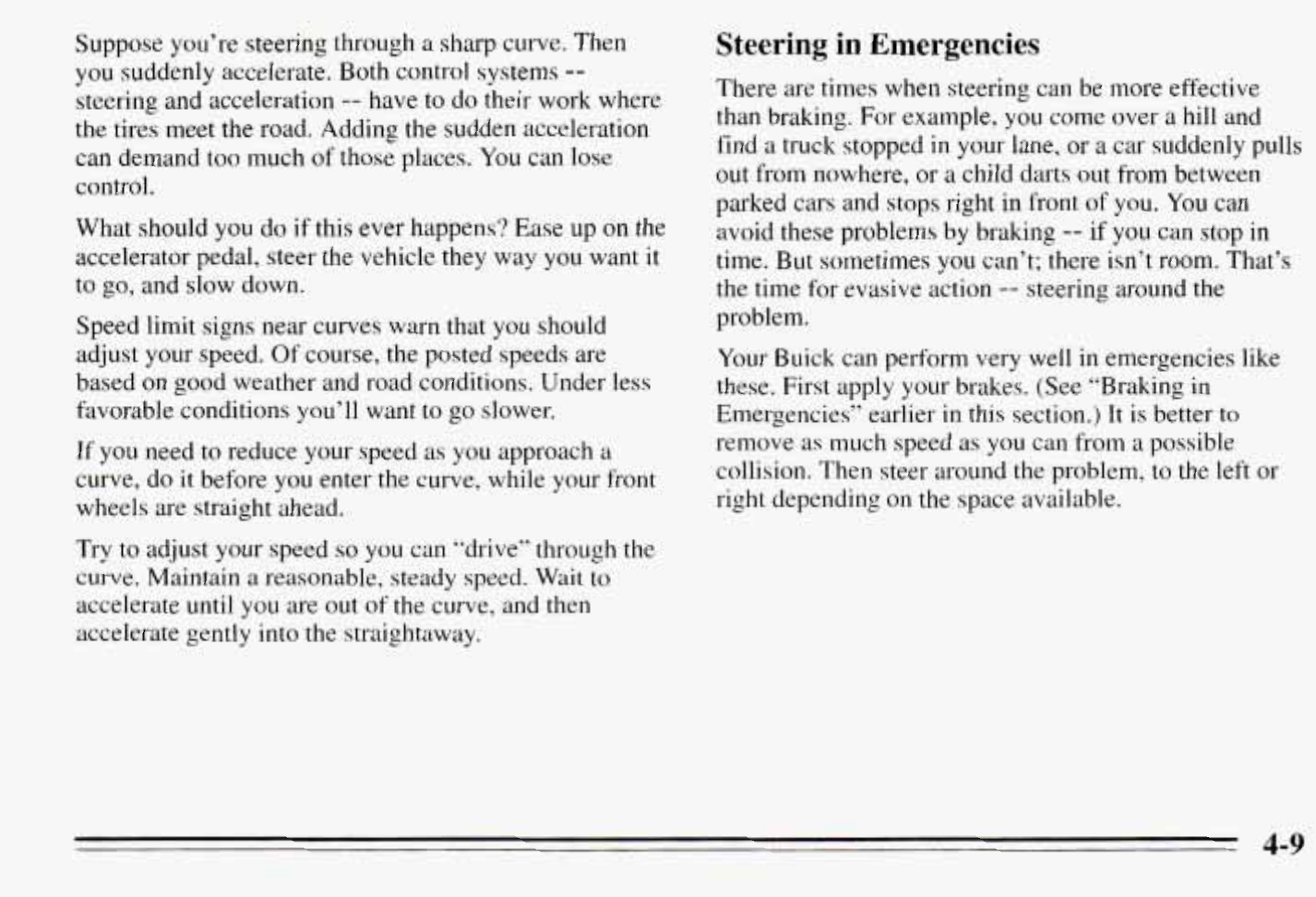
Suppose you’re steering through a sharp curve. Then
you suddenly accelerate.
Both
control systems
--
steering and acceleration
--
have to do their work where
the tires meet the road. Adding the sudden acceleration
can demand too much
of those places. You can lose
control.
What should
you
do if this ever happens? Ease up
on
the
accelerator pedal, steer the vehicle
they
way
you
want it
to go, and slow down.
Speed limit signs near curves warn that you should
adjust your speed. Of course, the posted speeds are
based on good weather and road conditions. Under less
favorable conditions you’ll want to go slower.
If
you need
to
reduce your speed as you approach a
curve, do it before you enter
the
curve, while your front
wheels are straight ahead.
Try
to adjust your speed
so
you can “drive” through
the
curve. Maintain a reasonable, steady speed. Wait to
accelerate
until
you are out
of
the
curve, and then
accelerate gently into the straightaway.
Steering
in
Emergencies
There are times when steering can be more effective
than braking.
For
example,
you
come over a hill and
find
a
truck stopped
in
your
lane,
or
a
car suddenly pulls
out from nowhere, or
a
child darts out
from
between
parked cars and stops right in front
of you. You can
avoid these problems by braking
--
if
you
can stop in
time.
But
sometimes
you
can’t; there isn’t room. That’s
the time for evasive action
--
steering around the
problem.
Your Buick can perform very well in emergencies like
these. First apply your brakes. (See “Braking in
Emergencies” earlier
in
this section.) It is better to
remove as much speed as you can from a possible
collision. Then steer around
the
problem, to the left or
right depending
on
the space available.
4-9


















